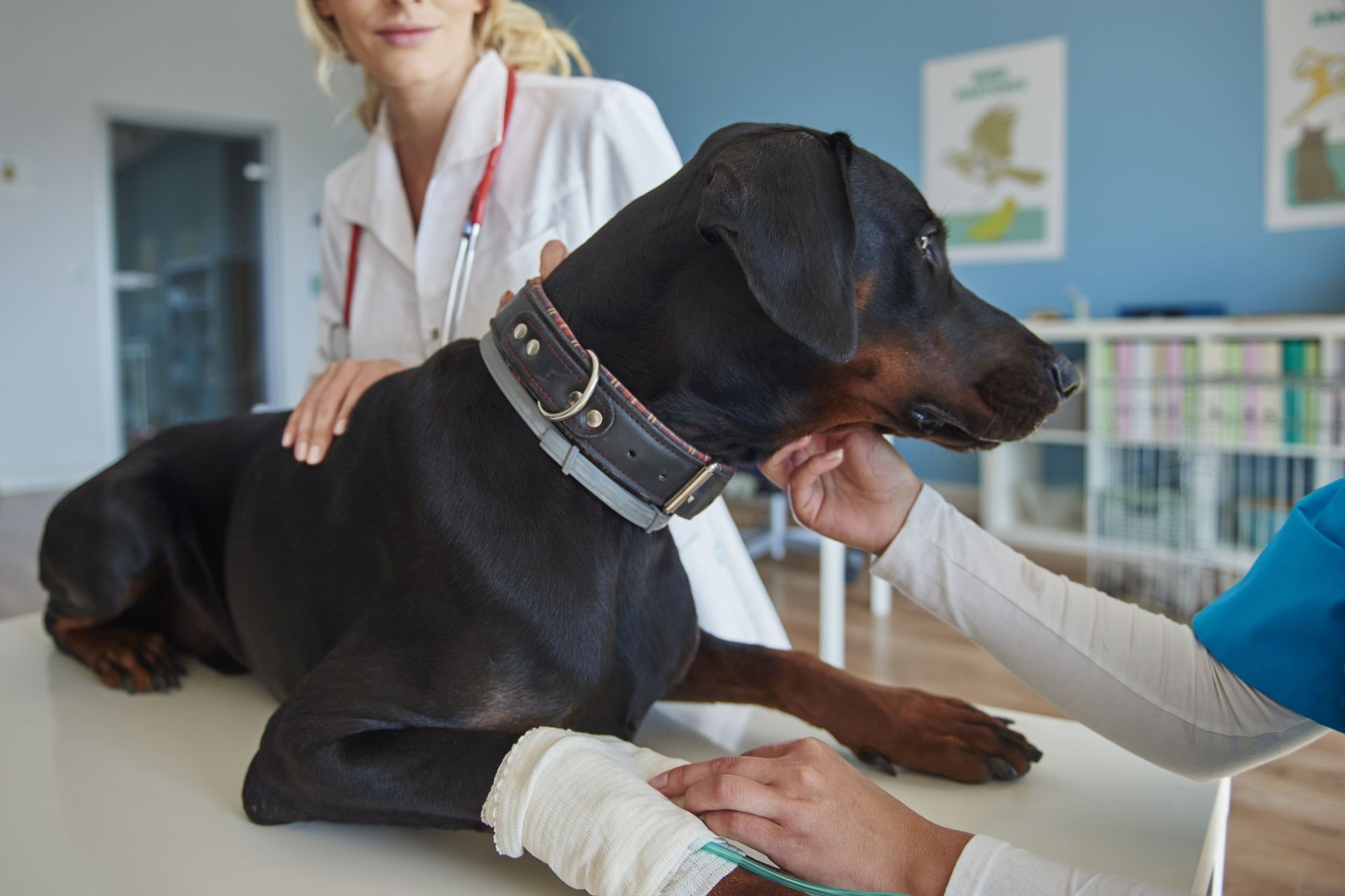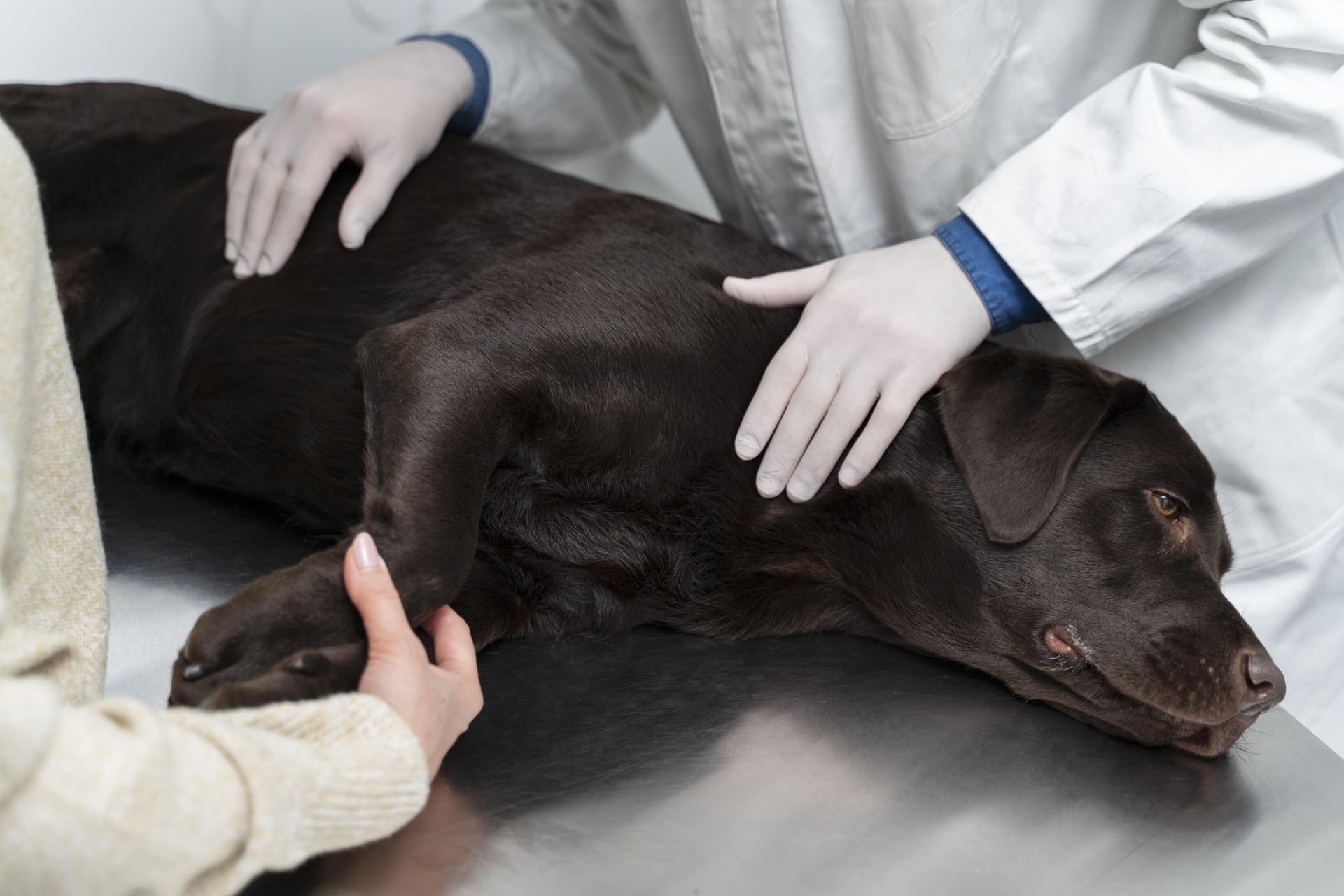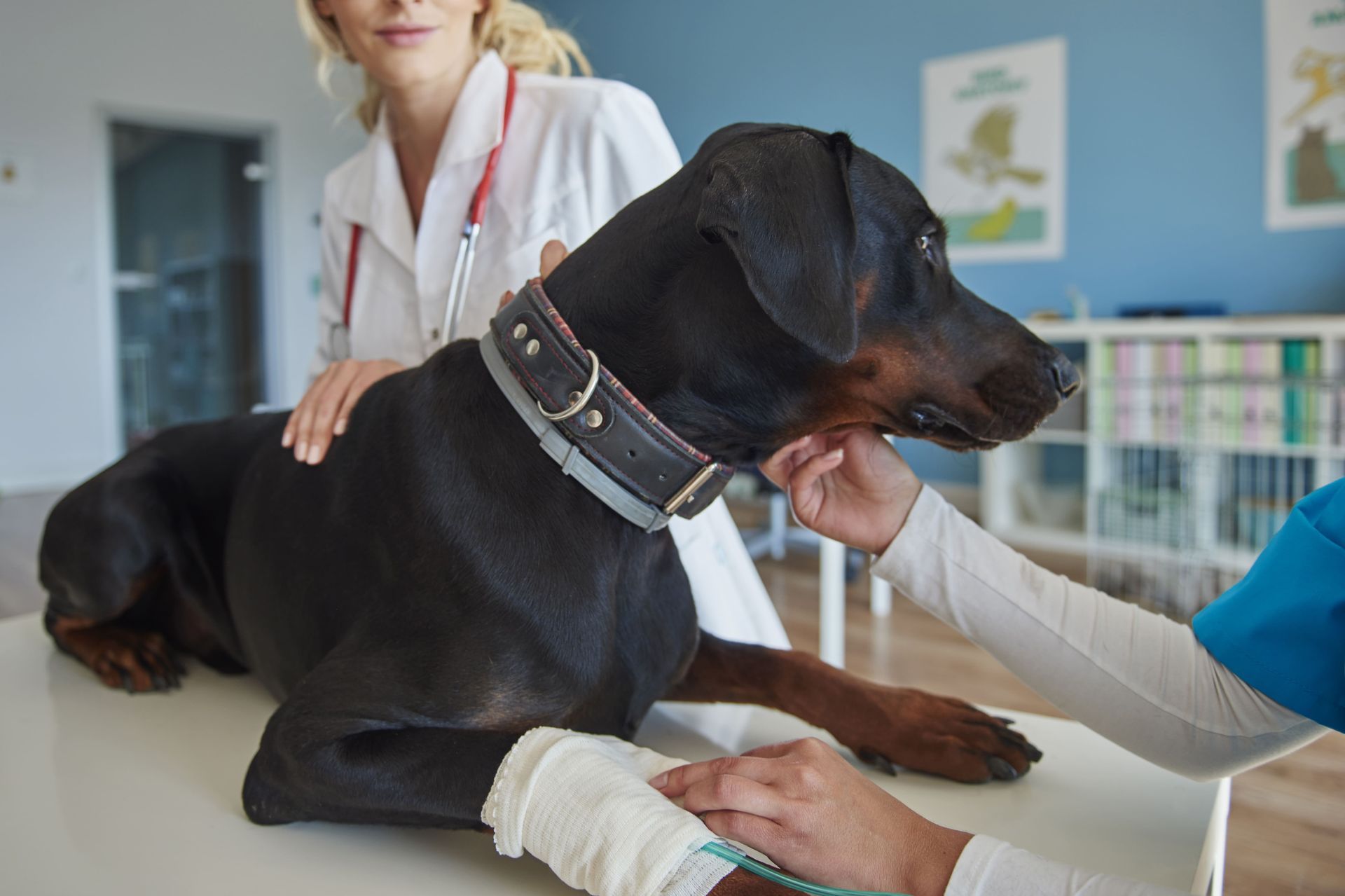Our beloved furry friends can suffer from pain just like humans, and it can be heart-wrenching to see them in discomfort. Understanding the common causes of pain in dogs and exploring effective solutions can help improve their quality of life. In this blog, we'll dive into what might be causing your dog pain and explore ways to bring them dog pain relief.
Recognizing Signs of Pain in Dogs
Dogs express pain in various ways, such as limping, whining, or showing changes in behavior. It's crucial to recognize these signs early to address the underlying issue.
1. Often, the first sign you might notice is a change in your dog's usual gait or reluctance to engage in activities they typically enjoy. They may also avoid climbing stairs or jumping onto furniture.
2. Behavioral changes are also telling: a dog in pain may become more withdrawn, less interested in play, or even show signs of aggression when touched.
3. Appetite can also be an indicator, as a sudden disinterest in food might suggest discomfort.
4. Another subtle indicator of pain is excessive licking or grooming near a specific area. Dogs might do this to soothe themselves, but it could clue you into the location of their pain.
5. Vocalizations like whining, groaning, or yelping can also be a way your dog communicates discomfort.
Monitoring these signs closely and assessing their frequency and intensity can help you determine the urgency of the issue. It's important to document any combination of these symptoms and share them with your veterinarian to provide a comprehensive view of your dog's health and ensure the right dog pain relief strategies are applied.
Common Causes of Pain in Dogs
Understanding what causes your dog discomfort is the first step toward effective dog pain relief. From visible injuries to hidden health conditions, several factors can contribute to your pet's pain. Recognizing these common causes can help you take timely action and improve your furry friend’s overall quality of life.
Arthritis:
Especially prevalent in older dogs, arthritis leads to joint stiffness, swelling, and chronic pain. It's one of the most common reasons pet owners seek dog pain relief.
Injuries:
These can range from minor cuts and scrapes to more severe conditions such as ligament tears (e.g., ACL injuries), which may require surgical correction and post-operative care.
Infections:
Painful infections can result from tick bites, untreated wounds, or internal issues. These conditions often cause inflammation, fever, and localized or generalized pain.
Dental Problems:
Gum disease, tooth abscesses, or broken teeth can lead to significant discomfort. Dental pain may cause difficulty in eating or reluctance to chew, yet it often goes unnoticed until severe.
Intervertebral Disc Disease (IVDD):
Common in breeds like Dachshunds and Corgis, this spinal condition can cause sharp or radiating back pain, affecting mobility and comfort.
Internal Illnesses:
Conditions like pancreatitis or urinary tract infections may not show visible symptoms at first, but can cause considerable internal pain, requiring professional diagnosis and intervention.
Allergic Reactions:
Skin allergies can lead to intense itching, inflammation, and discomfort. Dogs often scratch or lick the affected areas excessively, which may worsen the pain and cause secondary infections.
Inflammatory Conditions:
Some chronic diseases, including autoimmune disorders or gastrointestinal inflammation, may cause systemic pain that is more difficult to localize without veterinary diagnostics.
Each of these causes demands a specific dog pain relief strategy, from medication and therapy to lifestyle and dietary changes. Early recognition and treatment are essential for improving your dog’s comfort and well-being.
The Role of Nutrition and Weight Management
Proper nutrition and maintaining a healthy weight are vital for reducing pain, especially for dogs suffering from joint issues. A balanced diet can help prevent and alleviate pain. Overweight dogs, in particular, are at a higher risk for joint pain and arthritis, making weight management a critical component of dog pain relief.
Ensuring your dog's diet is rich in omega-3 fatty acids, glucosamine, and chondroitin can promote joint health and reduce inflammation. Incorporating foods like salmon and flaxseed in your dog's diet can provide natural sources of omega-3s, aiding in reducing inflammation.
Consulting with your vet
about dietary supplements can further enhance their nutritional intake, targeting specific deficiencies that might exacerbate their pain.
Portion control is equally essential; feeding your dog appropriate serving sizes helps maintain a healthy weight, decreasing the stress on their joints and bones. For dogs with specific dietary needs, consider customized feeding plans created with veterinary advice. These plans should align with your dog's age, breed, and health condition.
For example, senior dogs might benefit from diets lower in calories but richer in nutrients essential for bone and joint health. Engaging with resources like
Lincoln Avenue Cat & Dog Hospital's
guidelines on feeding and nutrition ensures your dog gets the best dietary support for their condition, contributing meaningfully to their pain relief plan.
At-Home Remedies and Lifestyle Changes
Managing your dog’s discomfort at home doesn’t always require medication—simple changes to their daily routine and environment can make a noticeable difference. Here are some practical and gentle ways to support dog pain relief from the comfort of your home:
- Use heat therapy by applying a warm compress or heating pad (wrapped in a towel) to your dog’s sore joints or muscles for short durations. It helps soothe stiffness and provides comfort, especially for older dogs.
- Introduce herbal supplements like Boswellia or fish oil, known for their anti-inflammatory properties. These can be a helpful addition to your home-based dog pain relief strategy.
- Try gentle massage using circular motions on your dog’s back and limbs to ease muscle tension and improve blood flow. Be sure to check with your vet before doing this, particularly if your dog has a specific condition.
- Provide orthopedic or memory foam bedding to support your dog’s joints and spine while they rest. A comfortable sleeping space can make a big difference in their overall comfort.
- Incorporate regular light exercises such as short walks or swimming to maintain mobility without putting stress on painful joints.
- Consider alternative therapies like acupuncture or chiropractic care. These have been shown to relieve discomfort and support holistic healing.
- Make environmental adjustments by ensuring easy access to food, water, and favorite resting spots—minimizing the need for jumping or climbing stairs.
By integrating these simple yet effective habits into your dog’s routine, you’re actively contributing to their comfort and long-term health.
When to Consult Your Veterinarian?
If your dog's pain persists or worsens, it's essential to seek professional veterinary advice. They can provide a comprehensive diagnosis and recommend effective treatments. While recognizing and managing signs of pain at home is crucial, the potential for underlying conditions that require medical intervention remains significant.
For instance, infections or chronic diseases often masquerade as common pain but require targeted medication. A licensed vet will perform a thorough examination, potentially involving blood tests,
X-rays, or ultrasounds to pinpoint the exact cause of discomfort.
Early diagnosis and treatment can prevent further complications, and your veterinarian's expertise is invaluable in navigating this process. Moreover, your vet can guide you through tailoring specific dog pain relief plans, whether it's through pharmaceutical interventions, physical therapy, or surgery.
Veterinary consultation becomes even more critical if your dog shows drastic behavioral changes, refuses to eat or drink, or if you observe significant swelling or redness. These can be red flags indicating severe conditions that shouldn't be ignored. Prioritizing veterinary visits ensures a proactive approach towards your dog's health, ensuring they receive the best care suited to their individual needs.
Helping Your Dog Live Comfortably
Caring for a dog in pain requires patience, knowledge, and compassion. By identifying the root causes of their discomfort and choosing appropriate solutions, you can help your furry companion feel better and live a happier, more active life.
Whether it’s improving their diet, adapting their environment, trying out at-home therapies, or consulting with a vet, every step matters. Thoughtful, informed care can make all the difference. Remember—dog pain relief isn’t just about managing symptoms; it’s about improving quality of life.
FAQs
Q-1. What is the best way to provide dog pain relief at home?
Ans: At-home relief can include heat therapy, massage, orthopedic bedding, dietary changes, and herbal supplements. Always consult your vet before starting any new treatment.
Q-2. Can dog pain relief be achieved through diet?
Ans: Yes, a diet rich in omega-3 fatty acids, glucosamine, and chondroitin can help reduce inflammation and support joint health, especially in arthritic dogs.
Q-3. When should I take my dog to the vet for pain?
Ans: You should consult a vet if your dog shows ongoing pain symptoms, changes in behavior, appetite loss, or visible swelling. Early diagnosis is key to effective treatment.
Q-4. Are there non-medical therapies that help with dog pain relief?
Ans: Yes, options like acupuncture, swimming, gentle exercise, massage, and chiropractic care can complement traditional treatments and support overall well-being.









